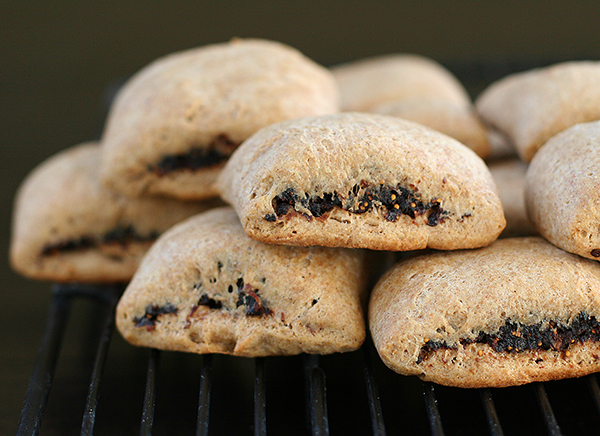


A 60 gram serving of fresh figs has 2 grams of fiber but only 10 grams of sugar. For instance, a 60 gram serving of dried, uncooked figs has 6 grams of fiber and 29 grams of sugar. The dehydration process of drying this fruit results in a higher concentration of sugar relative to weight, so dried figs have a higher concentration of carbohydrates-mostly in the form of sugar-than fresh figs. While dried figs are still medium-low on the glycemic scale, the GI of “61” and a GL of “16” compared to the fresh fig’s score of 51 and 2 respectively should not be ignored, especially during June through November when fresh figs are in good supply. However, the devil is in the details if one is serious about decreasing carb intake for both blood glucose control and weight loss. Figs are a carb counter’s best friend! Fresh, dried or cooked, the fig contains very few carbohydrates and, therefore, has little impact on blood sugar levels in most any form. For glycemic load, a score of 20 or more is high, while 10 or less is low.īefore getting to the cookie solution for this famed snack food, let’s first consider the main attraction to these iconic fruit bars. On the other hand, the glycemic load focuses on how many digestible carbohydrates (sugars) a food contains in a typical single serving, defined as approximately 3.5 ounces.Serving size is not a consideration in arriving at a food’s glycemic index number. For perspective, a score of 55 or below denotes a low-glycemic-index food 70 or above is considered very high. White bread, made with processed white flour, is at the top of this scale, scoring a perfect 100 on the glycemic index. The glycemic index of a food compares its effect on blood sugar level to that of pure glucose, which has a score of 100.Conversely, a diet of foods high on the glycemic charts has been proven to increase appetite and impede effective fat oxidation. They also reduce appetite and encourage the metabolism to burn body fat. While this is especially important for people with diabetes who process sugars much slower than others, everyone can benefit from eating foods with low glycemic scores. Foods that break down slowly enable the body to assimilate these calories of energy more efficiently without overwhelming the body with more sugar than it can process. The glycemic index assigns a score of 1 to 100 to all foods based on how speedy the body converts that food into sugar. Simply put, our bodies convert all foods into sugar calories that provide energy to the body via the bloodstream. One easy way to start taking control is to choose the foods we eat based on the glycemic index and glycemic load. By maintaining a sensible diet in conjunction with some regular exercise, no matter how minimal, we can all be in total control of our weight. However, diabetes and being overweight are very manageable, even preventable, with a few lifestyle tweaks. Diabetes and these extra pounds cost this country billions annually in both medical and economic resources, not to mention the effect these weight-related disorders have on overall mental well-being and happiness.

Then there are the 23.9 million overweight children who are dutifully following the example of their XXL adult role models. Another 29 million of us have diabetes, many as a direct result of being overweight. adult population, some 154 million, qualify as overweight or obese.


 0 kommentar(er)
0 kommentar(er)
